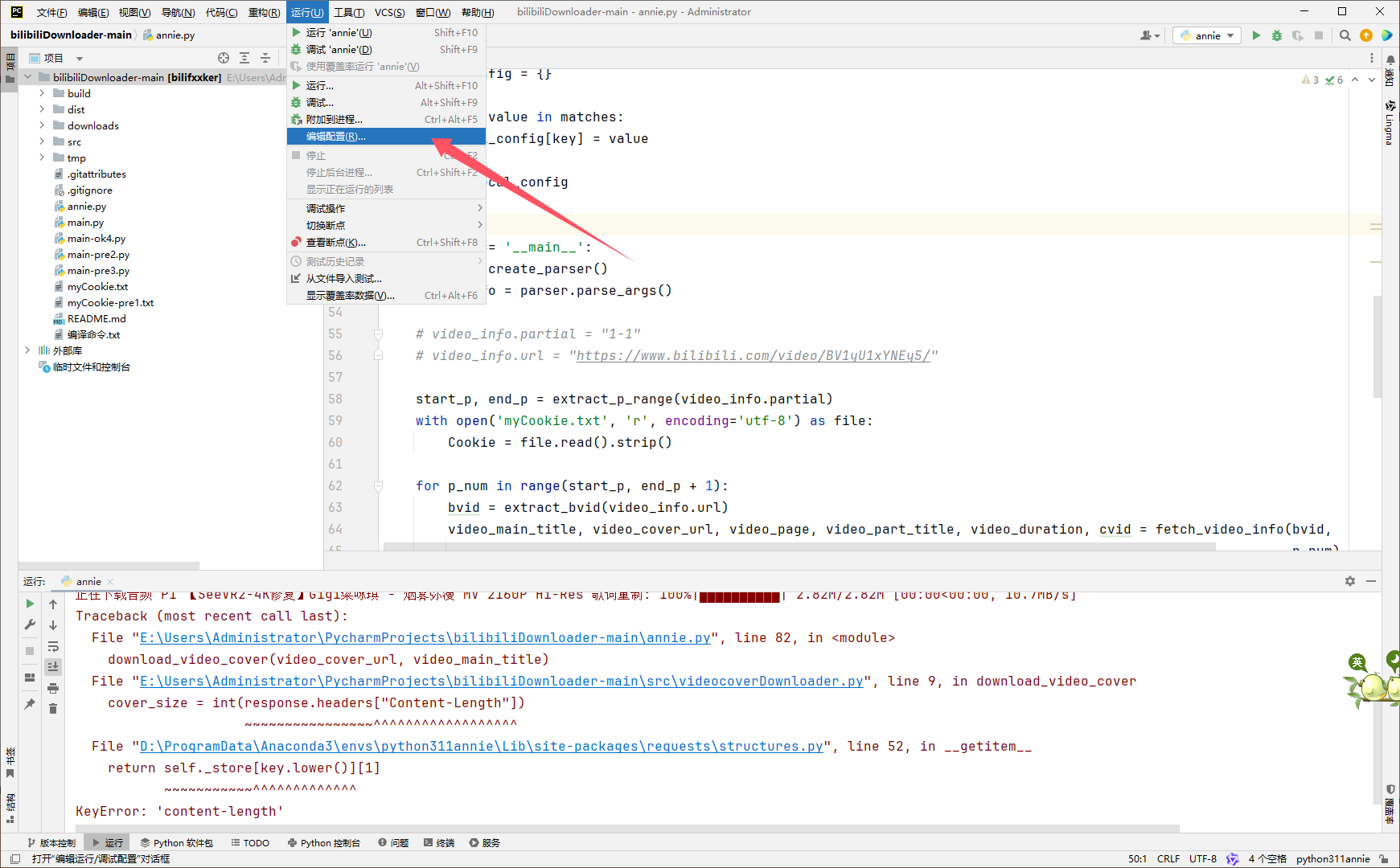百度AI伙伴写内部类实现链表
1306 2024-02-27 14:16 2024-03-07 12:06
question:使用java内部类实现链表
answer:
在Java中,我们可以使用内部类来实现链表。下面是一个简单的示例,该示例使用了一个名为Node的内部类来表示链表中的每个节点,以及一个名为LinkedList的外部类来表示整个链表。
java
public class LinkedList {
private Node head;
// 内部类Node,表示链表中的每个节点
private static class Node {
int data;
Node next;
Node(int data) {
this.data = data;
this.next = null;
}
}
// 向链表中添加节点
public void add(int data) {
Node newNode = new Node(data);
if (head == null) {
head = newNode;
} else {
Node current = head;
while (current.next != null) {
current = current.next;
}
current.next = newNode;
}
}
// 遍历链表并打印每个节点的数据
public void print() {
Node current = head;
while (current != null) {
System.out.print(current.data + " ");
current = current.next;
}
System.out.println();
}
public static void main(String[] args) {
LinkedList linkedList = new LinkedList();
linkedList.add(1);
linkedList.add(2);
linkedList.add(3);
linkedList.print(); // 输出: 1 2 3
}
}
在这个示例中,Node是一个静态内部类,它有两个字段:data用于存储节点的数据,next用于指向链表中的下一个节点。LinkedList类有一个head字段,它指向链表的第一个节点。add方法用于向链表中添加新的节点,print方法用于遍历链表并打印每个节点的数据。
注意,在这个示例中,我们使用了静态内部类Node。这是因为我们不需要在Node实例中访问LinkedList实例的任何字段或方法。如果我们需要在Node实例中访问LinkedList实例的字段或方法,那么我们应该使用非静态内部类,并在创建Node实例时隐式地传递对LinkedList实例的引用。
Q:将增删改查、以及打印功能封装到内部类里。重写这一程序。
A:
下面是一个将增删改查以及打印功能封装到内部类中的LinkedList类的重写版本。这个内部类LinkedListOperations提供了添加(add)、删除(remove)、查找(search)、修改(update)以及打印(print)链表的方法。
java
public class LinkedList {
private Node head;
// 内部类Node,表示链表中的每个节点
private static class Node {
int data;
Node next;
Node(int data) {
this.data = data;
this.next = null;
}
}
// 内部类LinkedListOperations,封装链表操作
private class LinkedListOperations {
// 向链表中添加节点
public void add(int data) {
Node newNode = new Node(data);
if (head == null) {
head = newNode;
} else {
Node current = head;
while (current.next != null) {
current = current.next;
}
current.next = newNode;
}
}
// 从链表中删除节点
public void remove(int data) {
if (head == null) {
return;
}
if (head.data == data) {
head = head.next;
return;
}
Node current = head;
while (current.next != null) {
if (current.next.data == data) {
current.next = current.next.next;
return;
}
current = current.next;
}
}
// 在链表中查找节点
public boolean search(int data) {
Node current = head;
while (current != null) {
if (current.data == data) {
return true;
}
current = current.next;
}
return false;
}
// 修改链表中节点的数据
public void update(int oldData, int newData) {
Node current = head;
while (current != null) {
if (current.data == oldData) {
current.data = newData;
return;
}
current = current.next;
}
}
// 打印链表中的数据
public void print() {
Node current = head;
while (current != null) {
System.out.print(current.data + " ");
current = current.next;
}
System.out.println();
}
}
// 提供一个公共接口来操作链表
public LinkedListOperations getOperations() {
return new LinkedListOperations();
}
public static void main(String[] args) {
LinkedList linkedList = new LinkedList();
LinkedListOperations operations = linkedList.getOperations();
operations.add(1);
operations.add(2);
operations.add(3);
operations.print(); // 输出: 1 2 3
operations.remove(2);
operations.print(); // 输出: 1 3
operations.update(1, 10);
operations.print(); // 输出: 10 3
System.out.println(operations.search(3)); // 输出: true
System.out.println(operations.search(2)); // 输出: false
}
}
在这个版本中,LinkedList类有一个私有内部类LinkedListOperations,它包含了所有对链表的操作方法。LinkedList类通过getOperations方法提供一个公共接口来访问LinkedListOperations的实例,这样用户就可以通过返回的LinkedListOperations实例来操作链表了。
在main方法中,我们创建了一个LinkedList实例,并通过调用getOperations方法获取了一个LinkedListOperations实例。然后,我们使用这个实例来添加、删除、修改和打印链表中的数据。
这样的设计让链表的操作更加模块化和封装,同时也提供了更好的封装性和数据隐藏。
Q:java一个类返回一个new自己的实例 提供一个公共接口
A:
可以使用Java中的静态工厂模式来实现这样的需求。
首先定义一个包含公共接口的类,比如命名为MyClass:
public interface MyClass {
void doSomething(); // 公共接口方法
}
然后创建一个实现了该接口的内部类,并在其构造函数中返回新的实例对象:
public class MyClassImpl implements MyClass {
private static final MyClass INSTANCE = new MyClassImpl();
public static MyClass getInstance() {
return INSTANCE;
}
@Override
public void doSomething() {
System.out.println("Doing something...");
}
}
最后通过调用getInstance()方法获取到MyClass的实例对象:
public class Main {
public static void main(String[] args) {
MyClass myObject = MyClassImpl.getInstance();
myObject.doSomething(); // 输出 "Doing something..."
}
}
chatGPT
Q:java内部类实现链表要求可以对指定下标的元素进行增删改查
A:下面是一个Java内部类实现链表,可以对指定下标的元素进行增删改查:
public class LinkedListWithOperations {
private Node head;
private int size;
private class Node {
int data;
Node next;
Node(int data) {
this.data = data;
this.next = null;
}
}
public void add(int data) {
Node newNode = new Node(data);
if (head == null) {
head = newNode;
} else {
Node temp = head;
while (temp.next != null) {
temp = temp.next;
}
temp.next = newNode;
}
size++;
}
public int get(int index) {
if (index < 0 || index >= size) {
return -1;
}
Node temp = head;
for (int i = 0; i < index; i++) {
temp = temp.next;
}
return temp.data;
}
public void insert(int index, int data) {
if (index < 0 || index > size) {
return;
}
if (index == 0) {
Node newNode = new Node(data);
newNode.next = head;
head = newNode;
} else {
Node temp = head;
for (int i = 0; i < index - 1; i++) {
temp = temp.next;
}
Node newNode = new Node(data);
newNode.next = temp.next;
temp.next = newNode;
}
size++;
}
public void delete(int index) {
if (index < 0 || index >= size) {
return;
}
if (index == 0) {
head = head.next;
} else {
Node temp = head;
for (int i = 0; i < index - 1; i++) {
temp = temp.next;
}
temp.next = temp.next.next;
}
size--;
}
public void display() {
Node temp = head;
while (temp != null) {
System.out.print(temp.data + " ");
temp = temp.next;
}
System.out.println();
}
public static void main(String[] args) {
LinkedListWithOperations linkedList = new LinkedListWithOperations();
linkedList.add(1);
linkedList.add(2);
linkedList.add(3);
linkedList.add(4);
linkedList.display();
System.out.println("Element at index 1: " + linkedList.get(1));
linkedList.insert(2, 5);
linkedList.display();
linkedList.delete(0);
linkedList.display();
}
}
在这个示例中,我们定义了一个`LinkedListWithOperations`类,其中包含一个内部类`Node`表示链表节点。类中提供了`add`方法用于在链表末尾添加元素,`get`方法用于获取指定下标的元素,`insert`方法用于在指定下标插入元素,`delete`方法用于删除指定下标的元素,和`display`方法用于打印链表中的元素。
在`main`方法中,我们创建一个`LinkedListWithOperations`对象,添加一些元素,然后执行一些增删改查操作,并最后打印链表中的元素。您可以根据需求调用这些方法对链表进行操作。希望这个示例符合您的需求。


全部评论